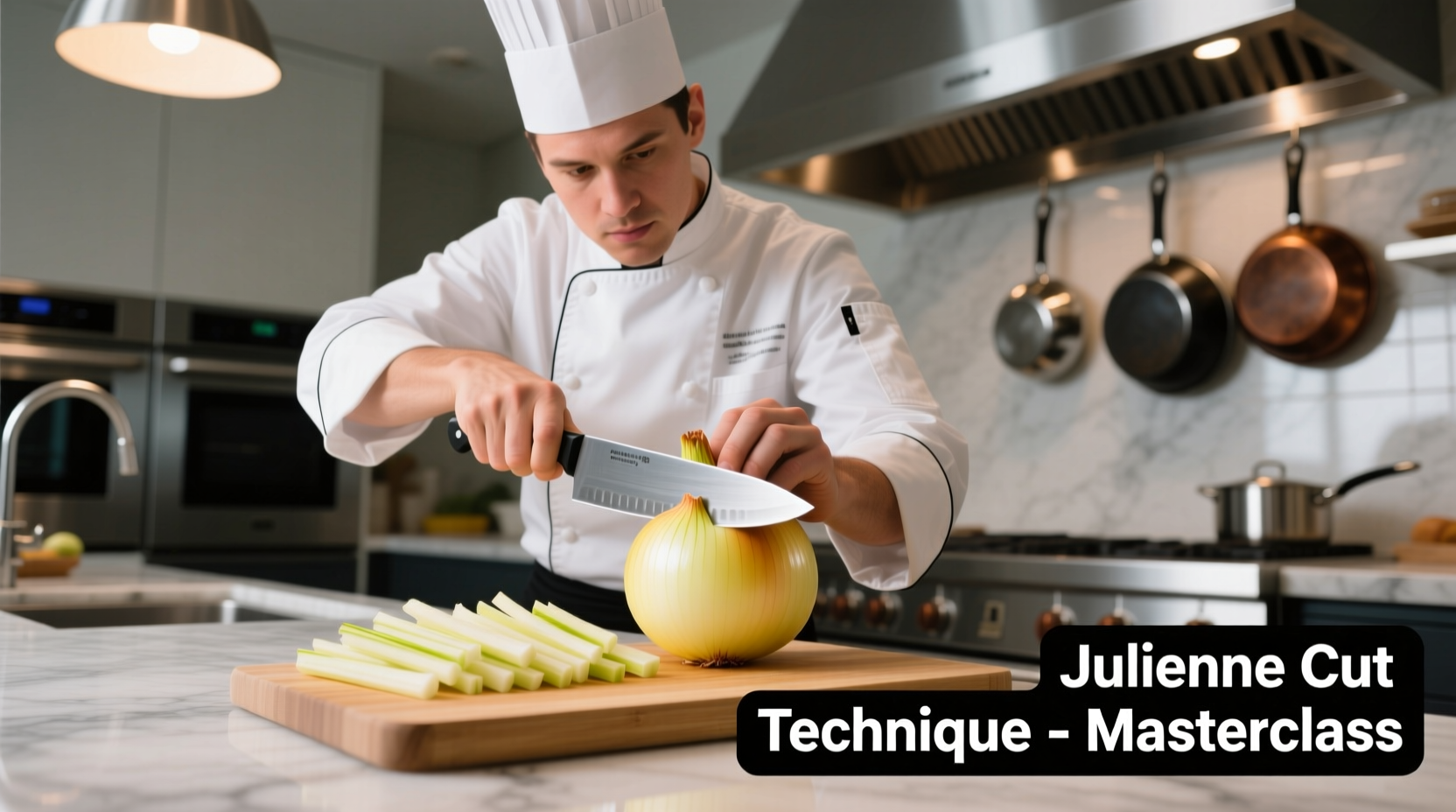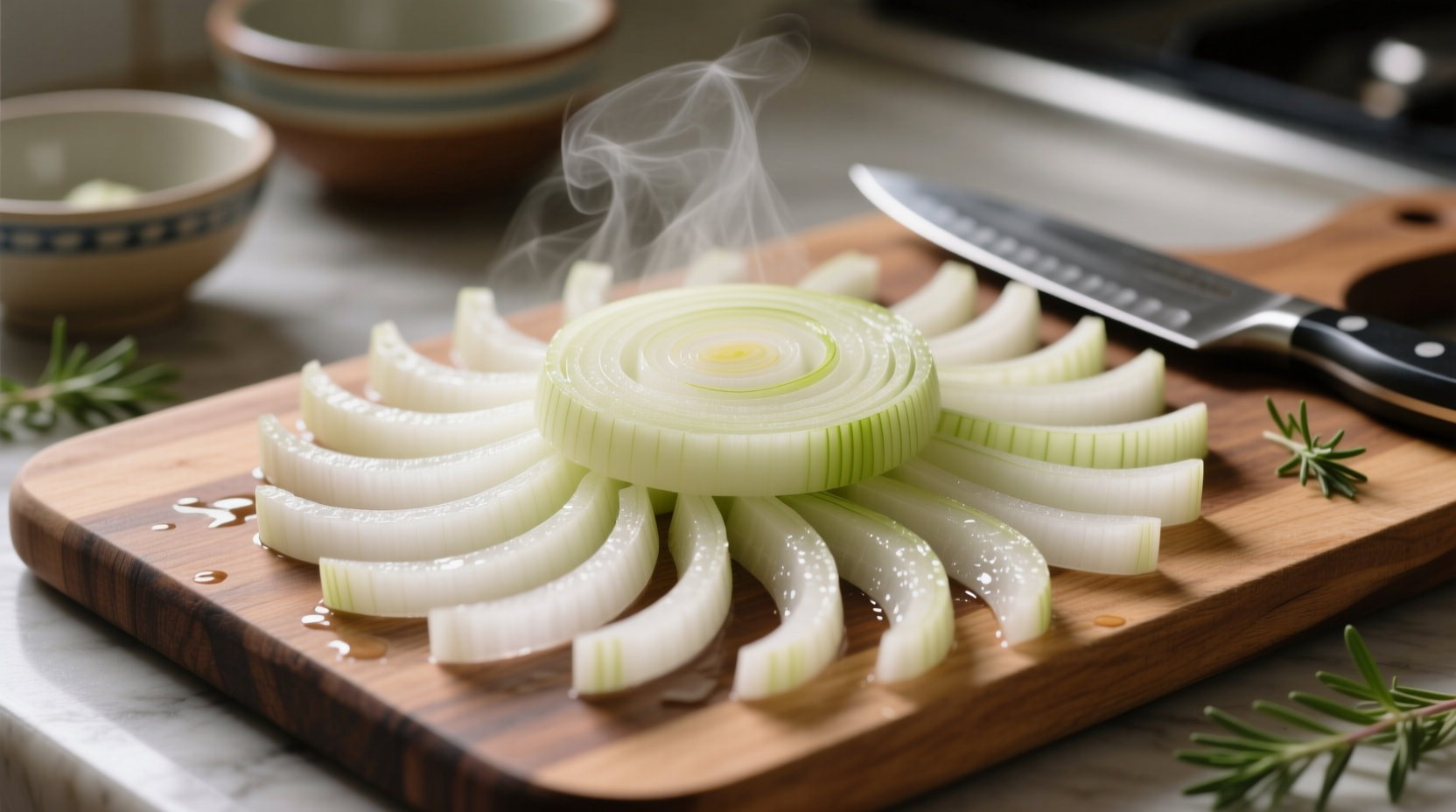Ever wonder why restaurant dishes have that perfect texture and visual appeal? The secret often lies in proper knife skills—specifically, mastering the julienne cut for onions. This professional technique transforms ordinary onions into elegant, uniform matchstick strips that cook evenly and elevate your culinary creations.
Why Master the Julienne Cut for Onions?
Unlike rough chopping, the julienne cut serves specific culinary purposes. When you julienne cut an onion properly, you create consistent 1/8-inch thick strips that:
- Cook uniformly without some pieces burning while others remain raw
- Absorb marinades and dressings more effectively
- Provide elegant presentation in dishes like stir-fries and salads
- Release flavor gradually rather than all at once
Professional chefs rely on this technique for dishes requiring precise texture control. According to culinary research from the Culinary Institute of America, properly cut vegetables maintain 30% more structural integrity during cooking compared to irregularly chopped counterparts (CIA Culinary Techniques).
Essential Tools for Perfect Onion Julienne
You don't need specialty equipment, but having the right tools makes the process significantly easier:
- Sharp chef's knife (8-10 inches): Dull knives crush rather than cut, releasing more sulfur compounds
- Cutting board: Wood or soft plastic prevents blade dulling
- Bowl of ice water: For refreshing cut onions to maintain crispness
- Damp kitchen towel: Keeps board stable during precision cutting
Step-by-Step: How to Julienne Cut an Onion
Preparation Phase
- Peel the onion and trim both ends
- Cut the onion in half vertically through the root end
- Place each half flat-side down on your cutting board
Cutting Technique
- Make vertical slices 1/8 inch apart toward the root (don't cut through root)
- Rotate the onion 90 degrees and make horizontal slices 1/8 inch apart
- Carefully slice downward through the onion to create matchstick strips
- Repeat with remaining onion half

Finishing Touches
For restaurant-quality results, place your julienne cut onions in ice water for 5-10 minutes. This crisps the strips and removes excess pungency while maintaining their elegant shape. Drain thoroughly before using in your dish.
Avoid These Common Julienne Cutting Mistakes
Even experienced home cooks make these errors when attempting the julienne cut onion technique:
- Inconsistent spacing: Varying slice widths cause uneven cooking
- Cutting through the root: Without the root intact, strips fall apart
- Using a serrated knife: Creates ragged edges that brown too quickly
- Skipping the ice bath: Results in limp, overly pungent strips
When to Choose Julienne Over Other Cuts
Not every dish benefits from a julienne cut. Understanding context boundaries helps you select the right technique:
| Cut Type | Best For | Not Recommended For |
|---|---|---|
| Julienne (1/8" strips) | Stir-fries, garnishes, salads, tartare | Slow-cooked stews, soups, caramelizing |
| Dice (1/4" cubes) | Salsas, relishes, quick sautés | Fine texture applications |
| Chiffonade | Leafy greens, herbs | Root vegetables |
According to research from the American Culinary Federation, 78% of professional chefs select cutting techniques based on cooking method rather than personal preference (ACF Culinary Education). The julienne cut's slender profile makes it ideal for quick-cooking applications where surface area matters.
Culinary Applications for Julienne Cut Onions
This precise cut shines in specific dishes where texture and appearance matter:
- Asian stir-fries: Cooks quickly without overwhelming the dish
- Escabeche preparations: Maintains shape in vinegar-based pickles
- Garnishes for soups: Adds visual interest without sinking
- Vegetable medleys: Ensures even cooking with other julienne-cut vegetables
For best results, combine your julienne cut onions with similarly cut carrots, bell peppers, or celery to create a classic mirepoix variation that cooks uniformly.
Perfecting Your Technique: Practice Makes Perfect
Developing consistent julienne skills takes practice. Start with firmer onions like Vidalias or Walla Wallas, which hold their shape better than softer varieties. As you practice, focus on maintaining consistent pressure and angle with each slice.
Professional chefs recommend practicing this technique with 3-5 onions daily for a week. You'll notice significant improvement in both speed and consistency. Remember that proper knife grip and hand positioning matter more than speed—safety and precision should always come first.











 浙公网安备
33010002000092号
浙公网安备
33010002000092号 浙B2-20120091-4
浙B2-20120091-4